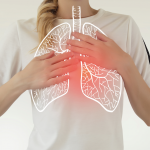
Paul Jones, chief information officer for the West Yorkshire Health and Care Partnership Digital Programme and chief digital information officer for Leeds Teaching Hospitals NHS Trust, shared his views on the current digital focuses within West Yorkshire as well as his thoughts on the future.
West Yorkshire is a fairly large ICS containing five acute hospitals, Paul said, and one of those hospitals is in the process of moving over a new Cerner EPR in “quite an innovative way – their two neighbouring trusts already have Cerner, and they are all joining onto the same instance.”
The ICS is also deploying a new pathology system across all trusts to create a network for pathology services in the region. “It’s an example of a digital solution supporting a broader clinical transformation. It’s a major undertaking, as we are moving six large trusts from at least three different systems onto a single system covering a whole region. We’ve gone live with a couple of parts of it and we have some larger-scale go-lives set to happen over the next few months. Ultimately we aim to have a consolidated and modern pathology platform working across all of the different trusts.”
More broadly across the ICS, Paul said that a key focus is how to improve information-sharing across different care settings. At present, the ICS is focusing on improving the sharing of maternity information, which will see maternity systems “plugged in” to the overarching care record. “A lot of this work has been done with the intention of paving the way for other use cases,” Paul commented. “We’ve built the plumbing as part of this project, if you like, so that when we want to follow this process for other areas such as palliative care, it will be a simpler experience.”
Regarding plans for the future, Paul said he would like to see more automatic tracking, whether that is tracking patients, beds or equipment, “so that the status of your hospital is really clear. We also need to get to a place where all patient information is structured, coded, clear, joined-up and used to drive decisions. This would allow us to focus on more pre-emptive care.”
Paul also picked up on the New Hospital Programme in West Yorkshire, which will see a brand new adults hospital, a new home for a children’s hospital, and reportedly the UK’s “largest single site maternity and neonatal centre” built in the centre of Leeds. A virtual ‘fly through’ of the planned facilities can be found here. “We’ve started talking about this – what should a digital hospital in a major UK city look like, say in 2035? How far away are we from that and what needs to happen?”
He concluded by pointing out that a lot of the things that need to change in order to achieve future visions of digital health “aren’t really digital in themselves – it’s not about the technology. Tech will get better, it will get slicker. We need clinical teams and clinical leaders who agree that it is the right thing to do for patients; feeling that it will not put them at risk of their clinical registration; and feeling that it is safe. If we can get over those barriers, then I think we will get a lot closer to where we want to be.”
Liz Leggott, project manager at the South Yorkshire Primary Care Workforce & Training Hub, also shared some insights into her region. On what digital projects and programmes the hub is focusing on at the moment, Liz highlighted the virtual reality and artificial intelligence tools that can be used to enhance their training officer to international GP trainees. “We are using 360 digital twin of a GP practice overlaid with clinicians, explaining their roles by way of induction and introductions,” Liz shared, “and we are using body swap tools so that our trainees can practise active listening and clear communication methods, because they can see how they’ve done by having their performance reflected back at them.”
The team are also utilising AI to help trainees practise their consultation skills, and working on testing out a virtual nurse placement along with the creation of cytology training in VR.
As for what the wider South Yorkshire ICS is prioritising for the future, Liz reflected that a likely focus is bettering the digital skills of the workforce. She noted that some PCNs have used their funding to employ digital lead roles, where others have been employed by a federation in the area, and also drew attention to the ongoing work of the Innovation Hub, a partnership between South Yorkshire ICS and Health Innovation Yorkshire and Humber. The Innovation Hub brings people together from the NHS, primary care, local authorities and university to share ideas and challenges, and to work collaboratively to “improve patient wellbeing and ways of working across South Yorkshire.” Find out more about the Hub’s work here.





